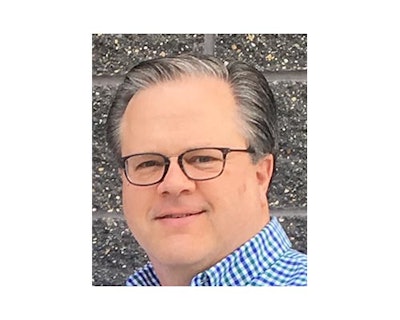
Food and beverage manufacturers and their processing and packaging equipment suppliers are aspiring to speak with one voice on a critically important issue in safely manufacturing low-moisture foods: hygienic design. Only “aspiring”? Why is it so hard? The answer is leadership. There’s a true conflict with speaking with one voice and designing hygienic equipment in isolation.
Seriously, travel back in time, and look at the way it was: Engineering would specify the design required for the application, purchasing would bid it out, buy it based on a quotation, and wait for delivery. New equipment would show up in time for a holiday shutdown, get installed and turned over to operation. The quality team was asked how to clean it. Many people slogged through startup. The marketing staff said it actually had something different in mind, so modifications were made. Eventually good product was produced. Tweaks and changes allowed the line to run better. Somewhere in time, engineers were off on to their next assignment. That’s so 1950.
Now it’s 2018, and, at Kellogg, we recently specified a fairly complex piece of equipment. Only the second of its type in the world. One that will increase productivity, be accessible for maintenance and cleaning, and stay running so we can keep making safe food every day and meet customer fill rates. Engineering met with the OEM several times. Long before the delivery date and after some reviews, some changes were made in fabrication. More reviews followed, as well as inspections with the maintenance, quality and sanitation, and engineering staffs. And a few more minor changes occurred. Then we did the factory acceptance test.
So, long before any shipping crates were made, we engaged key stakeholders face to face with the machinery in the shop. We debated how to access components, how to disassemble things with only a few tools, how to minimize or eliminate niche points or lap joints, and what level of polish to make the food contact surfaces. We decided on what cleaning chemicals to use and estimated how much water will be needed — lots of dialogue.
So, why is leadership the key? See for yourself. Download OpX Leadership Network’s One Voice for Hygienic Equipment Design report, published in late 2014. The report features simple best practices for engaging key stakeholders. It recommends that representatives from the various departments work alongside the OEM using the Joint Collaboration Process to:
1. Assess the risk: Evaluate biological, chemical and physical hazards. Is wet clean or dry clean required?
2. Determine the hygienic zones and cleaning methods: Clarify how the equipment will be used and what hygienic zone levels are required for sanitary operations. How is the equipment cleaned — wet or dry? What type of product contact surfaces?
3. Utilize the tools: Use the decision tree to identify the hygienic design criteria. Use TR3 Part 2 for design criteria.
4. Have discussions between CPG and OEM: Use the criteria to discuss and identify the required and appropriate hygienic design specifications to reach an agreement on equipment design.
The One Voice for Hygienic Equipment Design is just one of many tools the OpX Leadership Network offers that provides transformative solutions and best practices to improve operational excellence. Go to www.opxleadershipnetwork.org and browse around.
Have a cup of Vertical Startup with a side of:
1. Total Cost of Ownership provides the framework for comprehensive discussions at the initiation of a project and demonstrates the key interdependencies of critical design decisions.
2. For example, inclusion of the Validating the Reduction of Pathogens in Low-Moisture Foods and CIP for CPGs will be instructive to assure operational integrity and food safety.
3. Request for Proposal outlines the process that provides a consistency to engagements with suppliers and meeting your requirements.
4. Operational performance of the equipment is considered and evaluated through the OEE Guidelines and OEE Calculators.
5. The Factory Acceptance Test Protocols for the CPG Industry assures that the expectations of meeting all the design requirements will be validated.
So, how did our complex machine start up? Come back here in a few months, and I’ll let you know.
To learn more about hygienic equipment design and other ways to acheive operational excellence, register for ProFood Tech, which will take place March 26-28, 2019, in Chicago, at www.profoodtech.com.






















